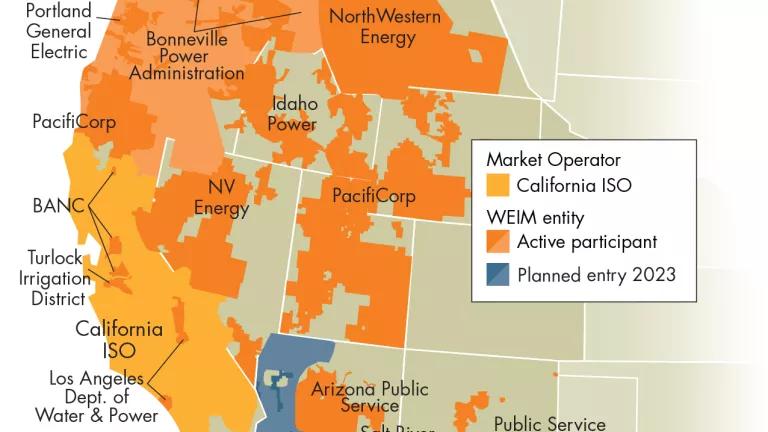An historic reorganization of the western electricity delivery system is underway. The sources of our electricity are changing rapidly, driven by shifting economics that include plunging natural gas prices, new state and federal policy goals, and the rise of renewable energy resources. Renewable generation sources have been shown capable of reliably powering increasing shares of our economy. And as large amounts of renewable power are added to the western grid, major changes in how it operates will be needed.
There are many benefits to the potential expansion of the California Independent System Operator (CAISO) across much of the western grid (the Western Interconnection, which serves parts of Montana, Nebraska, New Mexico, South Dakota, Texas, Wyoming, and Mexico; all of Arizona, California, Colorado, Idaho, Nevada, Oregon, Utah, Washington; and the Canadian provinces of British Columbia and Alberta). These benefits include cost savings for customers across the region, the avoidance of building redundant transmission lines and expensive power plants, and the reliable and cost-effective integration of renewable energy resources. Based on experience gained in the rest of the country’s organized grid regions, this Issue Brief examines issues related to renewable power integration and conventional power plant retirements as they apply to expanding CAISO’s footprint.


